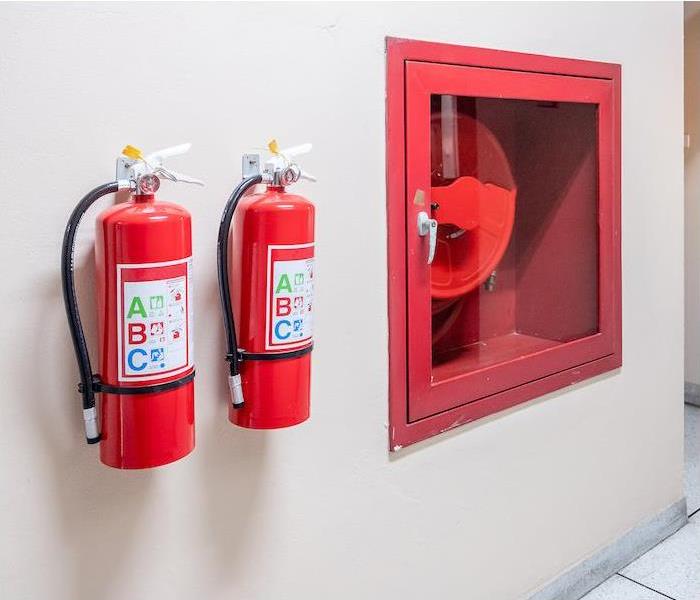Fire Extinguisher Basics for Your Business | SERVPRO® of Billings
4/3/2023 (Permalink)
 Dealing with the aftermath of a commercial fire? Our SERVPRO specialists can restore your losses and return your workplace to its pre-fire condition.
Dealing with the aftermath of a commercial fire? Our SERVPRO specialists can restore your losses and return your workplace to its pre-fire condition.
You may not want to imagine an emergency occurring at work, but when you are not prepared for one, it can make the situation much worse. If a fire were to break out in your commercial building, you would want the reassuring knowledge that you and your crew know how to properly respond.
Starting with the basics of fire safety, including what to do with a fire extinguisher, is a great way to create policies and procedures for your building in the event of an emergency. Fire extinguishers do not take a lot of training to learn, but they are not innately known by very many either.
Train your staff in the fundamentals of fire safety, and rest easier knowing your property is protected.
<h2with-the-fundamentals">Start With the Fundamentals
When you manage or own commercial property, it is crucial to ensure you have the right safety equipment in the right places. OSHA rules make it plain that any building that has a fire extinguisher must have someone trained to properly handle it.
That means it is your job to train your crew on not only how to use a fire extinguisher, but also on the different varieties of extinguishers.
Make the first part of your training be how to hold and aim an extinguisher. Instruct your employees to first get a solid grasp and direction, then to pull the pin and squeeze the trigger. Flames should be extinguished in a sweeping motion in order to cover a large area at once. Make sure your team knows to stand six to eight feet away from a fire in order to protect themselves from burns.
PASS is a great acronym that can be used to help your staff remember the basic steps if they do ever grab an extinguisher. Review the basics at least once a year with anyone that could potentially be present during an event, even if someone has been around a long time.
As you set your basic training up, you may also want to create more individualized trainings and assign particular staff members to certain areas of your building. This can ensure that every part of your property is covered during an emergency, and every kind of extinguisher has someone prepared to use it.
<h2s-a-time-and-a-place">There’s a Time and a Place
An important part of creating your training plan should be including information on the specific threats your building could see.
If you work with flammable materials in a warehouse setting, training for the kind of extinguisher and how to respond to those particular flames is crucial. If you have a kitchen in your building, make sure your employees understand the difference between a grease fire and a fire started by a different source, along with how to respond to each.
Understanding when it is safe to use a fire extinguisher and when it is not is also essential training for every member of your team. While quick action with an extinguisher can save lives and property, sometimes it is better to leave the area. Fire can spread quickly, and the safety of your staff should always be top priority.
If a situation has become overwhelming, make sure exit paths are clearly marked and employees know how to get out.
The better your workplace fire safety plan is the more you can mitigate the possibility of a disaster. Make sure everyone knows the fundamentals, and practice for every emergency situation in order to ensure the best possible outcomes every time.
If you have experienced fire damage or want to learn more about our fire damage restoration services, contact us today. We’re here to act fast, 24⁄7




 24/7 Emergency Service
24/7 Emergency Service